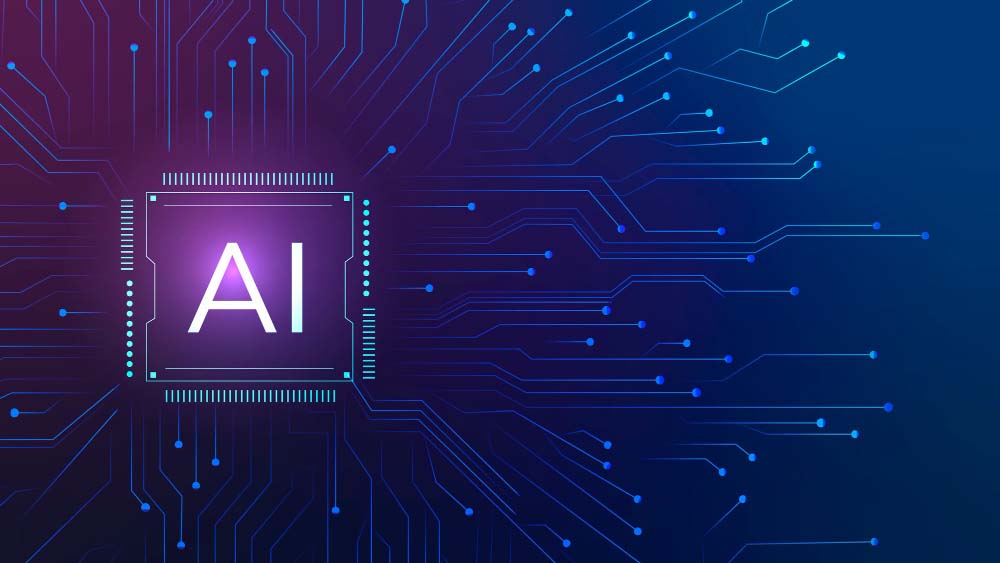The interplay between cybersecurity with artificial intelligence (AI) is among the most radical and urgent problems of our time. While technology is continuing to advance the sophistication of cyber-attacks has risen to new levels as the introduction with AI into cybersecurity technology has increased defense capabilities and created new security vulnerabilities. In this blog we will look at the cybersecurity landscape with the advent of AI and the threats it poses and the advances AI provides in defense and how companies can tackle this challenging landscape.
The Rise of Cybersecurity Threats in the Age of AI
As our dependence on digital systems expands as does the attack area for cybercriminals. Today, hackers are no longer just individuals using basic scripts to exploit simple vulnerabilities–they are highly organized and often well-funded entities, leveraging advanced technologies like AI to disrupt systems and steal sensitive data. This ever-changing threat environment is where the fusion of AI and cybersecurity has been both a blessing as well as a blessing and a.
1. AI-Powered Cyber Attacks
AI has enabled cybercriminals to carry out greater sophistication in their attacks. It also allows them to perform a variety of criminal activities, and attack systems with greater accuracy. Here are a few examples of how AI can enhance cyberattacks:
-
Automated Phishing Threats AI is able to analyze huge quantities of information from emails, social media and other platforms to create extremely targeted phishing attacks. They are convincing, and personal and more likely to deceive people.
-
Deepfake Technology Artificial Intelligence-driven Deepfake Technology allows cybercriminals to make realistic audios, videos or photos of people doing or saying things they’ve never done. This is a tool for fraud, extortion or misinformation campaigns, creating an extremely serious security risk.
-
AI-driven malware: Traditional malware can only accomplish a small number of functions, but AI helps malware to evolve and evolve in real-time, allowing it to stay out of detection. With AI malware, malware can be taught to exploit weaknesses and hide from detection and even take over AI systems to spread the threat.
-
Brute Force Attacks: AI can be employed to boost brute-force attacks against encrypted data as well as login passwords. AI can detect weak points in encryption methods, making attacks more efficient and speedier more than they ever have been before.
2. Increased Attack Surface
With AI being integrated into all aspects of our lives, both in the business and personal The digital landscape is now more complicated than it has ever been. The advent of Internet of Things (IoT) and smart devices, autonomous systems and cloud infrastructure has created a huge attack surface. The vast interconnected network of devices and systems has a variety of possibilities of ways for attackers to gain access.
-
Smart devices: AI is embedded in numerous common devices, ranging from home security systems, to wearables, and even connected vehicles. These devices gather huge amounts of information, which hackers are able to use to gain access. Since they often have outdated software or don’t have adequate security features, they could be the prime targets for cyberattacks using AI.
-
Cloud vulnerabilities: As more businesses move to cloud-based infrastructures the need to secure cloud data becomes more important. AI can be utilized to find vulnerabilities in cloud security models, which can allow attacks on personal and corporate data.
The Role of Artificial Intelligence in Cybersecurity Defense
On the other hand, AI has proven to be a formidable all-rounder in fighting cyber-attacks. With automated security and predictive abilities AI-powered tools are changing the way companies protect their data.
1. Threat Detection and Prevention
AI has drastically increased the speed and effectiveness of detecting cyber-attacks, especially when it is combined using machine-learning (ML). Machine learning models are able to analyze huge amounts of data real-time, and identify patterns and behaviours that suggest an attack. This ability to predict can help:
-
Behavior Analyses: AI can be taught to comprehend the typical behaviour of network users and systems. If there is a deviation from the normal patterns like an unusually long login time or pattern of access to data may cause an alert and help companies identify possible issues before they become serious.
-
Anomaly Detection Anomaly detection using AI are able to detect unusual activities that could indicate an attack from cyberspace. By monitoring networks continuously, AI can detect threats like SQL injections cross-site scripting, zero-day vulnerabilities which are usually overlooked by conventional methods.
-
Automated response: AI-powered systems may respond to threats detected autonomously by reducing the response time and thereby stopping an attack before it can cause major damage. For instance, AI can isolate compromised systems and block malicious traffic or apply patches to compromised devices in the real-time.
2. AI for Predictive Threat Intelligence
Predictive threat intelligence entails making use of AI to identify cyber threats prior to their occurrence. By analysing data from many data sources AI is able to identify patterns or trends emerging that could suggest the future attack strategy. This allows companies to take proactive steps to guard against any potential threats.
-
Predictive Analytics AI software can take in huge amounts of data that includes historical cyber attack information as well as threat intelligence reports as well as global trends in security to forecast the next cyber threat. This information helps businesses keep an inch ahead of criminals.
-
Collective Threat Intelligence AI can combine and analyze threat data from various industries and organisations. Through the pooling of data from various different sources AI helps companies discover trends in cybercrime, and increase their defense capabilities collectively.
3. AI in Incident Response and Recovery
AI can greatly increase the efficiency of incident response by automating crucial aspects that are involved, which will result in quicker recovery following an attack from cyber.
-
Incident Classification Artificial Intelligence can assist security personnel to prioritize incidents by automatically classifying incidents based on their impact and severity. This helps ensure that the most pressing concerns are first addressed and less pressing issues are dealt with accordingly.
-
Forensics as well as root Cause Analysis: AI can be utilized to conduct digital forensics, analysing attack vectors and assisting security professionals to understand how attacks unfolded. This helps in identifying faster the root cause, and more efficient remediation strategies.
-
Automatic Backup and Recovery AI-driven systems are able to automatically backup important information and restore it after an attack. This helps reduce downtime and help companies recover quickly, while minimizing operational and financial impact.
Challenges and Risks of AI in Cybersecurity
Although AI has enormous potential in improving security, there are a number of dangers and challenges that arise from its use.
1. Data Privacy and Ethics
AI systems require large amounts of data in order to be efficient. In the use of private information for training AI models raises questions about privacy of data and ethical consequences of using sensitive data to protect against cyber attacks. Companies should make sure that they have AI systems are compliant with laws governing data protection like the GDPR, to ensure that there are no violations of privacy.
2. AI Bias and False Positives
Artificial Intelligence systems can only be as reliable as the data they’re taught on. If the data is skewed or insufficient or incomplete, the AI might create False Positives, or fails in detecting legitimate threats. This could result in unneeded alerts, or missing attacks. Regular updates and correct education for AI models are crucial to minimize these issues.
3. Adversarial AI
The issue is growing more serious, which has been the use of adversary AI that allows attackers to manipulate AI models in order to fool or confuse them. For instance, a criminal could subtly alter input data to trick an artificial intelligence-powered system to classify malware as safe. To prevent this from happening cybersecurity experts must create solid AI models that are able to stand up to attacks from adversaries.
4. Complexity and Cost
Implementing AI-driven cybersecurity requires substantial investment in the technology and the expertise. For many companies, particularly small and medium-sized companies (SMEs) and SMEs, the expense and complexity of implementing AI security tools could be a hindrance.
Navigating the Future: Best Practices for Organizations
As we move into the new era of AI businesses should take proactive steps to guard themselves against the ever-growing threat of cyber attacks. Here are some good methods to take into consideration:
-
invest in AI-based security Instruments: Leverage AI-driven threat detection, anomaly detection or automated responses systems in order to improve your security position.
-
Continuous learning and adaptive AI algorithms require continual learning in order to be relevant. Make sure to regularly upgrade the security system and train them with new data in order to enhance their performance.
-
Create a robust Incident Response Plan Incorporate AI in your incident response strategy to ensure your team has the right tools and information to swiftly recover from cyberattacks.
-
Adopt an Zero-Trust Security Model Implement an approach to security that is zero-trust that ensures trust is never taken for granted that each device and user is always checked. This is crucial when dealing with IoT and AI systems.
-
Train employees on cybersecurity Hygiene: Human error is one of the most significant weaknesses in the field of cybersecurity. Help employees recognize threats to their security and follow the best practices to secure network and devices.
Conclusion
Security in today’s world of AI can be described as a double-edged weapon. On one hand AI can empower both attackers and defenses by bringing new opportunities and new challenges. However, AI presents an unprecedented chance to be ahead of cyber attacks by deploying faster, more effective security methods. In the meantime, as AI technologies continue to develop companies must stay alert, invest in the latest cybersecurity solutions, and adjust to the constantly changing digital landscape. In this way we can move into in the coming years with security confidence, and security.








